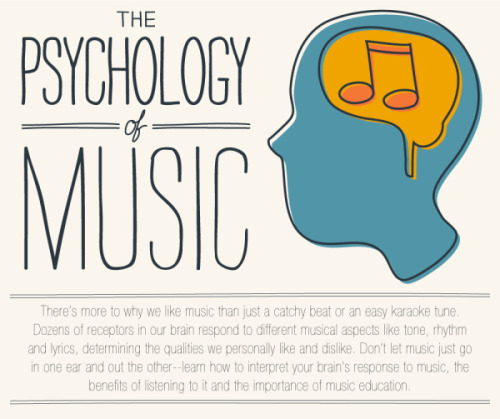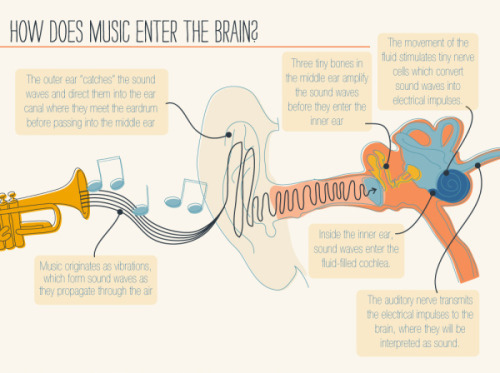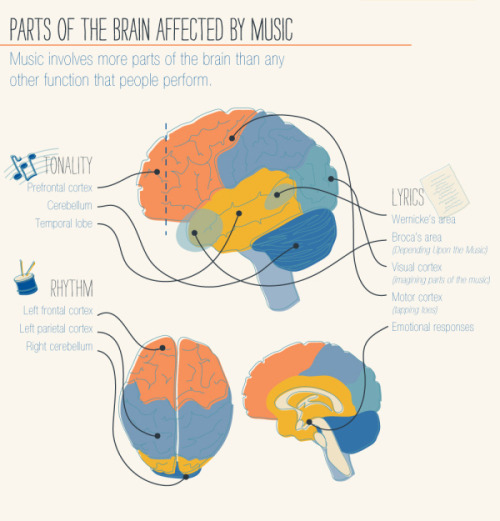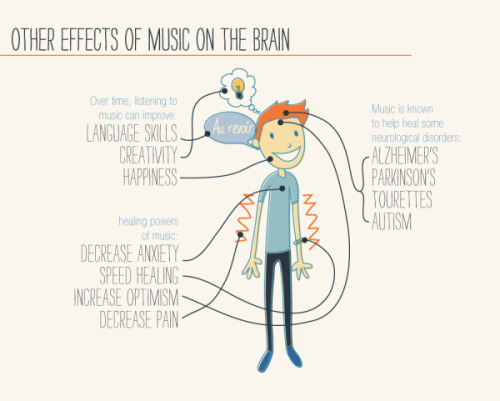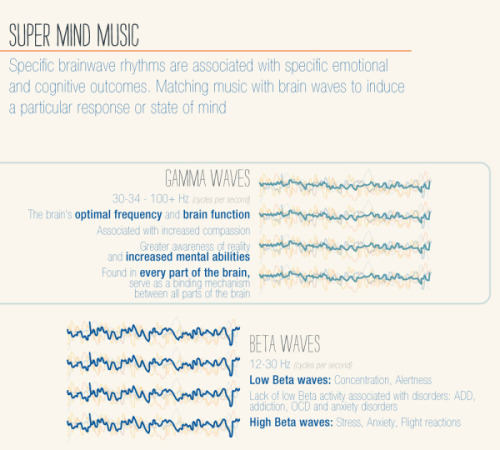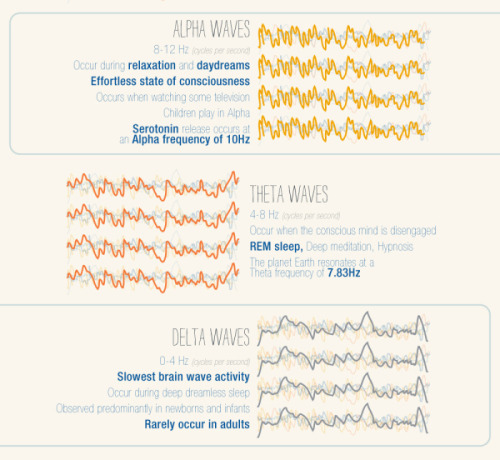This Massive Virus With Its Own Immune System Could Hold The Future Of Medicine

This massive virus with its own immune system could hold the future of medicine
French researchers think they’ve found a giant virus big enough to house its own virus-killing devices using a system like CRISPR, and it could be a completely new form of life.
Called a mimivirus, it was first found growing in amoebae in a water tower. At four times the size of a typical virus, you can even see it under a light microscope
When the mimivirus encounters another virus, it stores some of the invader’s genetic material. That way, when it encounters the same kind of virus again, the MIMIVIRE system goes into gene-editing berserker mode, finding the key genes of the virus and cutting them to inert oblivion. This could have major applications.
Follow @the-future-now
More Posts from Contradictiontonature and Others

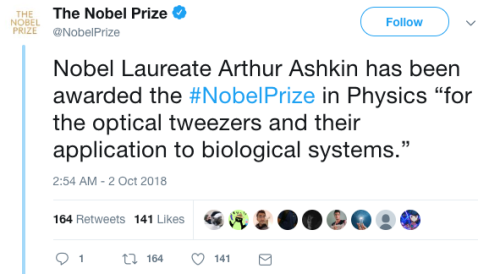
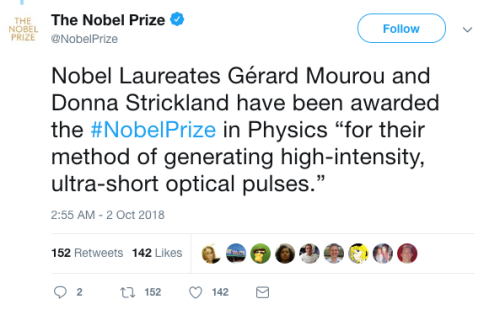
Breaking News:
The Nobel Prize in Physics for 2018 has been awarded to Arthur Ashkin, Gerard Mourou and Donna Strickland “for groundbreaking inventions in the field of laser physics”.
Donna Strickland is the first woman to win the Nobel Prize in Physics in 55 years.
Nobel Laureate Arthur Ashkin has been awarded the #NobelPrize in Physics “for the optical tweezers and their application to biological systems.”
Nobel Laureates Gérard Mourou and Donna Strickland have been awarded the #NobelPrize in Physics “for their method of generating high-intensity, ultra-short optical pulses.”
Article here with more information about their work:
Arthur Ashkin, Gérard Mourou and Donna Strickland win Nobel physics prize







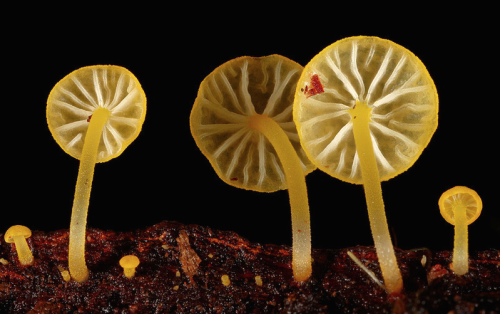


a mushroom rainbow to put the fun in fungi. cause they don’t need psilocybin to be magic. and though some mushrooms are coloured as a toxicity warning to predators, many others are brightly coloured to instead attract potential spore dispersers. see this for more on the bioluminescent mushrooms seen here. (photos)

5 sleep disorders you didn’t know existed
Ever shouted at your partner while you slept, or woken up unable to move? From apnoea to exploding heads, here are some strange things that go bump in the night.
Sleep apnoea
A surprisingly common condition in which you stop breathing for 10 seconds or more as you sleep. The lack of oxygen causes your brain to wake you up, or pull you into much lighter sleep. Either way, it can have a profound effect on the quality of your sleep – and that of any bedfellow, as it’s often accompanied by loud snoring.
Sleep paralysis
A terrifying experience, where the body, which naturally becomes paralysed duringREM sleep, is still paralysed when you wake. You are fully conscious but cannot move or speak, sometimes for several minutes. Some people also feel as if they are choking or their chest is being crushed and they may have visual hallucinations. The condition can be exacerbated by sleep deprivation, some drugs, and disorders such as sleep apnoea.
Hypnagogic jerks
Those jumps or twitches you experience as you nod off, often accompanied by the sensation of falling. The cause remains a mystery. One idea is that you start dreaming before your body becomes paralysed. Another is that the twitches are a by-product of your nervous system relaxing as you drift off.
REM sleep disorder
If you’ve ever punched or shouted at your partner in the night, only to remember nothing next morning, you may have been in the grip of this condition. Here, the body isn’t fully paralysed during REM sleep, so people act out their dreams. Thistends to happen only with bad dreams.
Exploding head syndrome
This entails the sensation of a loud noise, like an exploding bomb or a gunshot, as you drift off or wake up. It affects about 1 in 10 of us and it tends to start around age 50. Nobody knows what causes it– perhaps physical changes in the middle ear, or a minor seizure in the brain’s temporal lobe. Despite its name, the condition is harmless.
Image Credit: Toby Leigh
Source: New Scientist (By Catherine de Lange)

We might think we know the human body pretty well by now, but scientists are still discovering incredible individuals who are defying all odds by living out their lives with crucial parts missing, added, or tweaked in the most extraordinary ways.
From those with almost superhuman abilities, to others living without the organs we hold most dear, here are five of the most remarkable humans known to medicine.
Read more…

For those poorly informed (educated) who insist that vaccines are just the same as catching the illness…. This is just one example of why that is not true.
Breakthrough for vaccine research: Mucosa forms special immunological memory
If a vaccine is to protect the intestines and other mucous membranes in the body, it also needs to be given through the mucosa, for example as a nasal spray or a liquid that is drunk. The mucosa forms a unique immunological antibody memory that does not occur if the vaccine is given by injection. This has been shown by a new study from Sahlgrenska Academy published in Nature Communications.
Immunological memory is the secret to human protection against various diseases and the success of vaccines. It allows our immune system to quickly recognize and neutralize threats. “The largest part of the immune system is in our mucosa. Even so, we understand less about how immunological memory protects us there than we do about protection in the rest of the body. Some have even suggested that a typical immune memory function does not exist in the mucosa,” says Mats Bemark, associate professor of immunology at Sahlgrenska Academy, University of Gothenburg.
After extensive work, the research team at Sahlgrenska Academy can now show that this assumption is completely wrong.
Mats Bemark et al. Limited clonal relatedness between gut IgA plasma cells and memory B cells after oral immunization, Nature Communications (2016). DOI: 10.1038/ncomms12698
Sounds, such as music and noise, are capable of reliably affecting individuals’ moods and emotions, possibly by regulating brain dopamine, a neurotransmitter strongly involved in emotional behavior and mood regulation.

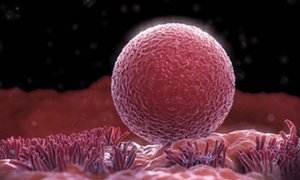
Evidence suggests women’s ovaries can grow new eggs
Scientists have uncovered the first evidence that the human ovary may be able to grow new eggs in adulthood.
If confirmed, the discovery would overturn the accepted view that women are born with a fixed number of eggs and that the body has no capacity to increase this supply. Until now this has been the main constraint on the female reproductive lifespan. The findings, if replicated, would raise the prospect of new treatments to allow older women to conceive and for infertility problems in younger women.
The small study, involving cancer patients, showed that ovarian biopsies taken from young women who had been given a chemotherapy drug had a far higher density of eggs than healthy women of the same age.
Prof Evelyn Telfer, who led the work at the University of Edinburgh, said: “This was something remarkable and completely unexpected for us. The tissue appeared to have formed new eggs. The dogma is that the human ovary has a fixed population of eggs and that no new eggs form throughout life.”
Ovarian biopsies taken from young women who had been given a particular chemotherapy drug showed that the tissue appeared to have formed new eggs. Photograph: Science Picture Co/Getty Images/Science Faction

This Week in Chemistry: Preventing marble statue weathering, further progress towards hydrogen fusion, and more! Links: http://goo.gl/WeJRV5
-
 shanlosttooth liked this · 1 year ago
shanlosttooth liked this · 1 year ago -
 czae liked this · 6 years ago
czae liked this · 6 years ago -
 sh0rtbl0ndeguy liked this · 6 years ago
sh0rtbl0ndeguy liked this · 6 years ago -
 eastloscarosie liked this · 7 years ago
eastloscarosie liked this · 7 years ago -
 panda-poo16-blog liked this · 7 years ago
panda-poo16-blog liked this · 7 years ago -
 0pabinia liked this · 7 years ago
0pabinia liked this · 7 years ago -
 causereasons reblogged this · 8 years ago
causereasons reblogged this · 8 years ago -
 ancastoica reblogged this · 8 years ago
ancastoica reblogged this · 8 years ago -
 palomitasedanca liked this · 8 years ago
palomitasedanca liked this · 8 years ago -
 animalqueue reblogged this · 8 years ago
animalqueue reblogged this · 8 years ago -
 seniorinternaut liked this · 8 years ago
seniorinternaut liked this · 8 years ago -
 contradictiontonature reblogged this · 8 years ago
contradictiontonature reblogged this · 8 years ago -
 macgyvermedical liked this · 8 years ago
macgyvermedical liked this · 8 years ago -
 whatslifehonestly liked this · 8 years ago
whatslifehonestly liked this · 8 years ago -
 sami1807 liked this · 8 years ago
sami1807 liked this · 8 years ago -
 hex-pot liked this · 8 years ago
hex-pot liked this · 8 years ago -
 theflyingquirrell-blog liked this · 8 years ago
theflyingquirrell-blog liked this · 8 years ago -
 petvetstudent reblogged this · 8 years ago
petvetstudent reblogged this · 8 years ago -
 e16w reblogged this · 8 years ago
e16w reblogged this · 8 years ago -
 triapus reblogged this · 8 years ago
triapus reblogged this · 8 years ago -
 ativ-eclod-al liked this · 8 years ago
ativ-eclod-al liked this · 8 years ago -
 earlymornings-longernights liked this · 8 years ago
earlymornings-longernights liked this · 8 years ago -
 ourmaggbl liked this · 8 years ago
ourmaggbl liked this · 8 years ago -
 just-paint-the-roses-red liked this · 8 years ago
just-paint-the-roses-red liked this · 8 years ago -
 fuzzyinfluencerdream liked this · 8 years ago
fuzzyinfluencerdream liked this · 8 years ago -
 drcorbell reblogged this · 8 years ago
drcorbell reblogged this · 8 years ago -
 cheshiregrave liked this · 8 years ago
cheshiregrave liked this · 8 years ago -
 nosenseatallha liked this · 8 years ago
nosenseatallha liked this · 8 years ago -
 17nstudying-blog reblogged this · 8 years ago
17nstudying-blog reblogged this · 8 years ago -
 thecutestofbuttons reblogged this · 8 years ago
thecutestofbuttons reblogged this · 8 years ago -
 a-cactus-enthusiast reblogged this · 8 years ago
a-cactus-enthusiast reblogged this · 8 years ago -
 ahhhlexandra liked this · 8 years ago
ahhhlexandra liked this · 8 years ago -
 egg1able reblogged this · 8 years ago
egg1able reblogged this · 8 years ago -
 starstruckedwallflower liked this · 8 years ago
starstruckedwallflower liked this · 8 years ago -
 agentmatta reblogged this · 8 years ago
agentmatta reblogged this · 8 years ago -
 agentmatta liked this · 8 years ago
agentmatta liked this · 8 years ago -
 basilbub666 liked this · 8 years ago
basilbub666 liked this · 8 years ago -
 call-this-what-you-want reblogged this · 8 years ago
call-this-what-you-want reblogged this · 8 years ago
A pharmacist and a little science sideblog. "Knowledge belongs to humanity, and is the torch which illuminates the world." - Louis Pasteur
215 posts

